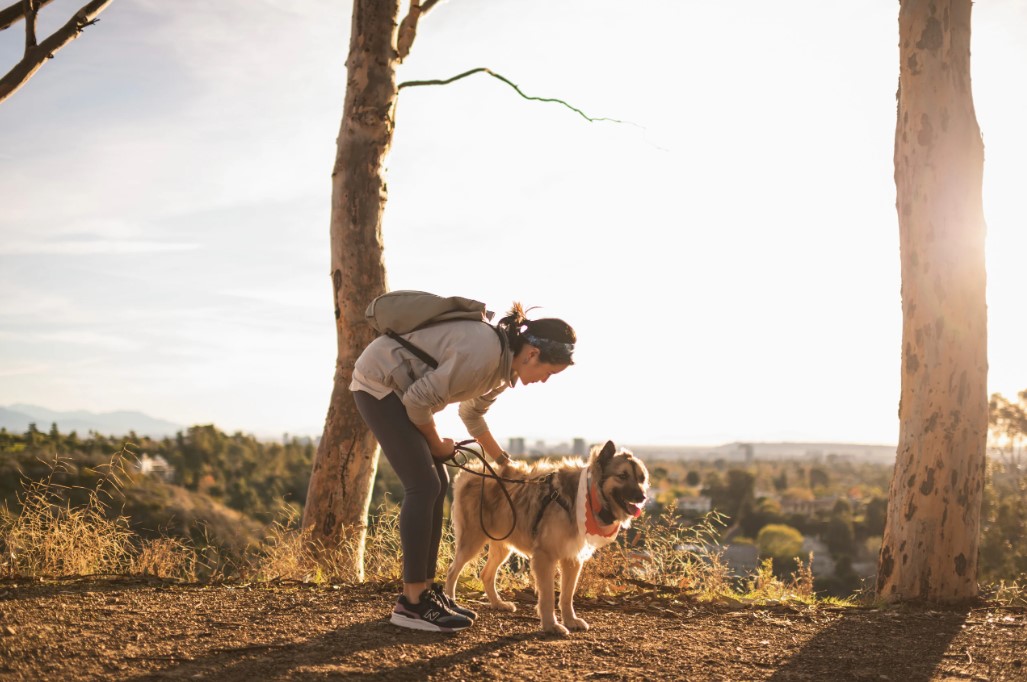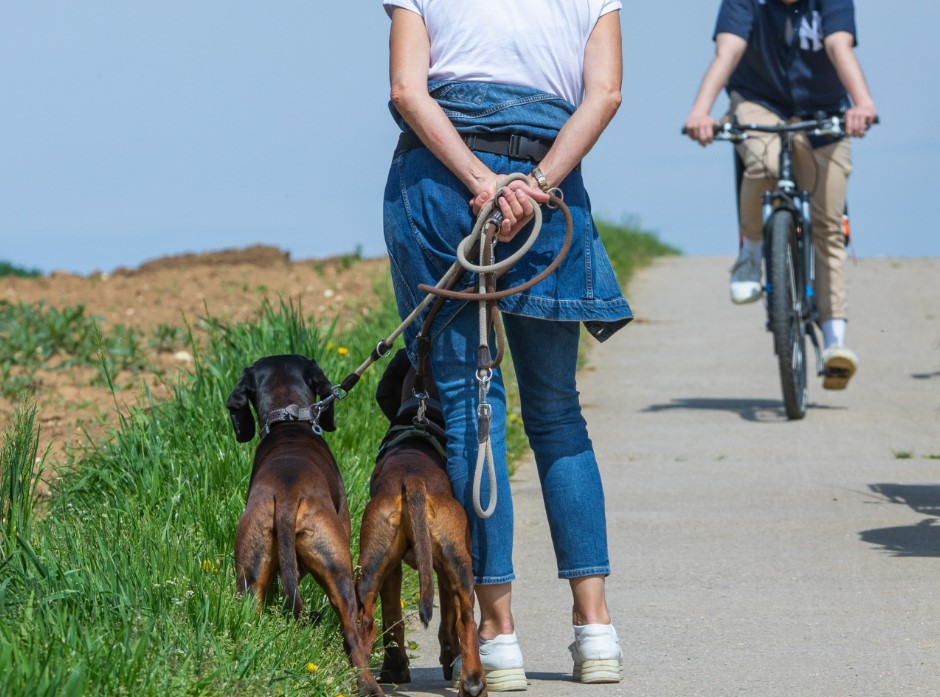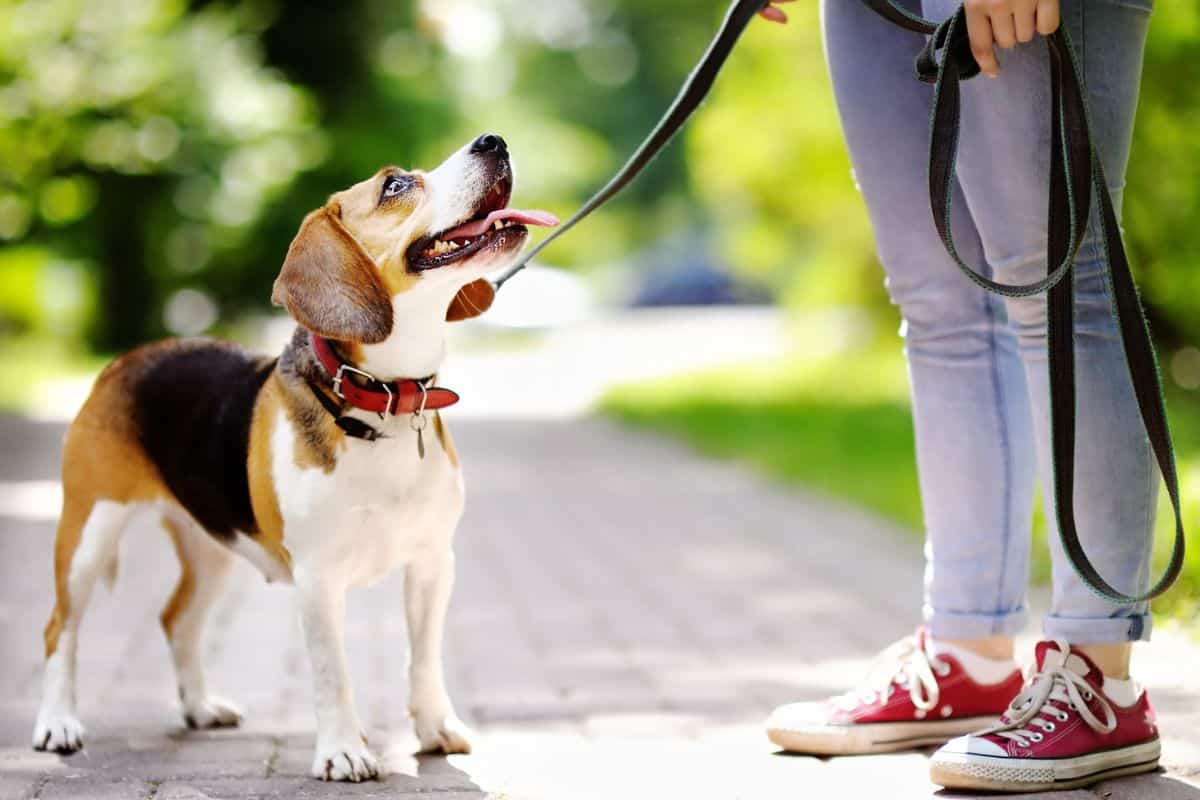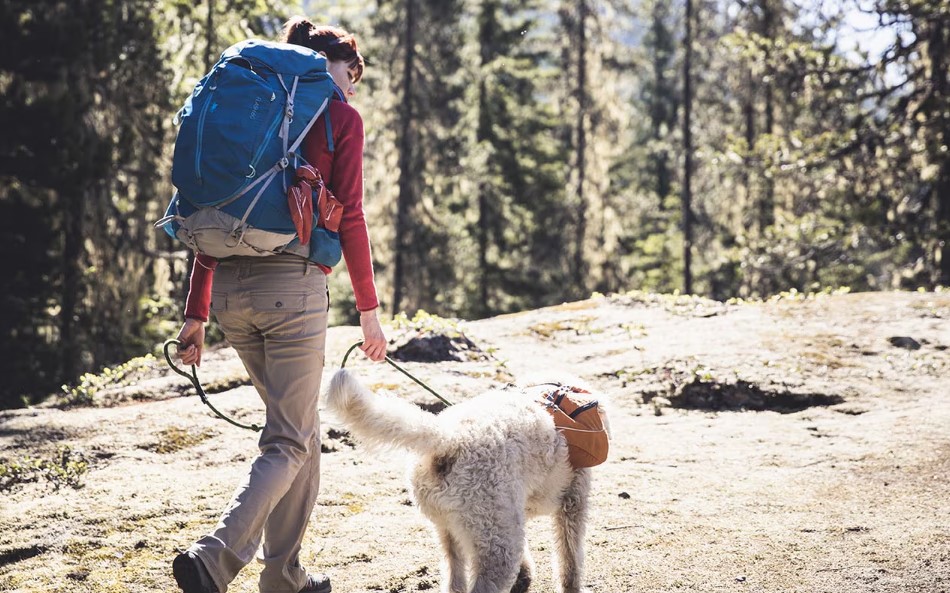Multi-use paths unfold as dynamic backdrops where dog owners can fuse outdoor activity with bonding. These bustling routes, thronged by walkers, runners, cyclists, and other pets, present dogs with exhilarating physical challenges, mental stimulation, and abundant chances for social engagement. With the right preparation, these journeys flow seamlessly, preserving the enjoyment for both your dog and fellow path-goers.
Guiding your beloved little friend through these shared spaces introduces them to diverse environments, kindling positive connections while strengthening your bond. Yet, these paths come with distinct hurdles that require thoughtful navigation to ensure a smooth experience for all.

Preparing for the Path
- Heed local rules ─ Before setting off, familiarize yourself with the path’s dog regulations. Many routes impose leash mandates, while some allocate specific dog-friendly zones or hours. Abiding by these rules wards off penalties and cultivates a welcoming environment for all.
- Choose the right path ─ Selecting an ideal route is crucial for your dog’s ease. Weigh your pet’s energy, temperament, and social inclinations when choosing between busier or quieter paths. High-energy dogs might thrive amid the hustle, observing the action with eager curiosity, while nervous or reactive ones often find solace in quieter settings with fewer distractions.
Essential Gear for the Path
- Harness and leash ─ Outfit your dog with a harness that disperses pressure evenly across the chest and shoulders, sparing the neck from strain. Match it with a sturdy leash of four to six feet, allowing ample freedom while maintaining control. Retractable leashes, on crowded paths, can breed chaos, making it harder to maneuver around other path users.
- Water and snacks ─ Hydration is paramount, especially on longer treks or warm days. Carry a portable water bottle and a collapsible bowl for easy access. Bringing treats enables you to reward positive behavior and helps keep your little friend focused during distractions. Use these rewards wisely to reinforce commands and redirect attention when necessary.
- Waste disposal ─ Cleaning up after your pet is vital to maintaining the cleanliness of shared spaces. Always carry waste bags and discard them in designated bins. Consistent waste management reflects respect for fellow path users and upholds responsible pet ownership.

Safety Tips for Multi-Use Paths
- Stay alert ─ Shared paths demand sharp vigilance. Scan constantly for cyclists darting past, joggers pacing steadily, and other dogs weaving through the trail. Keen attention allows you to foresee situations and react swiftly, reducing the risk of mishaps. Tune in to cues from other users—bells ringing, voices calling out—warding off unexpected encounters.
- Keep tight control ─ Holding your dog close is crucial in crowded spaces. A short leash prevents them from straying into cyclists’ lanes or veering into runners’ paths. This firm proximity lets you quickly redirect if another dog or distraction catches their eye. Regular practice solidifies this habit, training it to stick by your side, even in lively environments.
- Watch for fatigue ─ Dogs, especially on long treks or in heat, can flag quickly. Observe for signs like heavy panting, slowing pace, or frequent pauses in shaded spots. If it shows weariness, take breaks, offer water, and consider curbing the journey. Knowing their limits ensures an enjoyable outing without pushing them too far.
Etiquette for Sharing the Path
- Yield and pass with grace ─ Courtesy drives harmony on shared paths. When quicker users—cyclists or joggers—close in, shift aside, positioning it at your inner leg. Condition them with commands like “wait” or “stay” during these moments, reinforcing them with treats. Stay alert for passing signals—bells or shouts—ensuring seamless interactions. When overtaking, a clear “passing on your left” averts startling others and preserves the path’s flow.
- Mind dog-to-dog encounters ─ Crossings with other dogs happen often. Since not all of them welcome sudden meetings, always check with the other owner before allowing your one to approach. Even if both seem friendly, keep greetings brief and controlled, watching for shifts in energy. If your dog leans toward anxiety or reactivity, steer clear of interactions, focusing instead on moving ahead calmly.
- Respect space ─ Spatial awareness fuels peaceful coexistence on the path. Avoid blocking the route, especially during breaks. Keep your dog close, steering clear of lanes frequented by runners or cyclists. Remember, not everyone feels at ease around dogs—maintain respectful distances, ensuring all users enjoy their journey free from stress.

Training Tips for Multi-Use Paths
- Perfect leash manners ─ Polished leash skills turn walks into fluid experiences. Teach it to stride calmly by your side, curbing pulling or sudden lunges. Start in low-distraction zones before venturing into busier settings. Reward steady pacing with treats and praise. Address pulling with clear corrections and use positive reinforcement to recapture focus when distractions arise.
- Strengthen focus commands ─ Commands like “watch me” or “heel” hold immense value on crowded paths. These cues anchor your dog’s attention, quelling reactions to cyclists or runners. Introduce these commands in calm environments, then gradually add stimuli. Solid focus commands steer your dog’s behavior, even when temptations surge.
- Ease reactivity to fast-moving objects ─ Some of them react with excitement or fear to cyclists or runners. Gradual exposure from a comfortable distance, coupled with rewards for calm behavior, desensitizes them. Over time, close the gap while maintaining positive reinforcement. This technique soothes reactivity and trains your dog to remain composed amidst swift movements on the path.
Handling Challenges on the Path
- Managing startle responses or anxiety ─ Even well-trained dogs can startle at sudden noises or swift movements. If your dog shows signs of anxiety—trembling, barking, or pulling away—remain calm and grounded. Avoid reprimanding them, as it may amplify their stress. Instead, speak in a soothing tone and redirect their focus to a familiar command like “sit” or “focus.” Keep high-value treats on hand to reward calm behavior. Gradual re-exposure to similar situations, paired with positive reinforcement, builds confidence and eases future anxiety.
- Handling unruly dogs ─ Encounters with unleashed or aggressive dogs, such as a feisty Chihuahua (check https://petsforhomes.com.au/dogs-puppies/chihuahua/ for more information about Chihuahua), can unsettle both you and your pet. If approached by an unrestrained dog, position yourself as a barrier between them. Stay composed and avoid direct eye contact with the approaching dog to prevent escalation. Use a firm, commanding voice to deter it with phrases like “stay” or “go home.” Back away steadily while keeping your dog’s attention on you. If tension escalates, swiftly move to a safe distance and seek assistance if necessary.

Conclusion
Exploring multi-use paths with your dog offers rich, rewarding experiences when approached with care, preparation, and attentiveness. Remember that these shared spaces cater to all, not just owners—mutual respect ensures everyone’s safety and enjoyment. With thoughtful planning and consideration for others, you and your best friend can share many memorable adventures on these trails.

